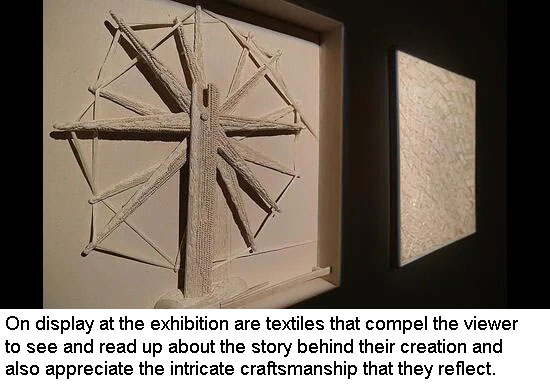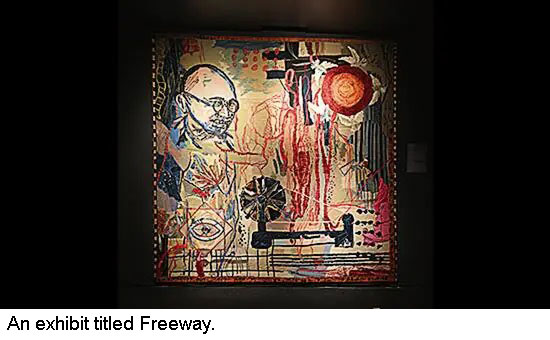
Category: INDIAN HERITAGE TEXTILE
Country: India
Paying homage to the profuse textile tradition of the country, in its 75th year of independence, is the ongoing exhibition titled ‘Sutr Santati. Then. Now. Next.’
By Priyaanshie Raathore, New Delhi Updated on Aug 31, 2022 02:33 PM IST
The fabrics and weaves that are created in India, are famous all over the world. These not only form an integral part of the nation’s identity, but are also a tradition. The natural yarns and intricate craftsmanship that goes in developing a fabric is diverse and exuberant. Paying homage to these thread of tradition, in the 75th year of Indian independence, is the ongoing exhibition titled Sutr Santati. Then. Now. Next.
On display are textiles that compel the viewer to see and read up about the story behind their creation. One among these exhibits is the work Telia, by textile designer Gaurav Shah. He shares, “Telia Rumal is an age-old technique of Ikkat that is done in Hyderabad, in the village Pochampally. It’s all pure natural Khadi cotton and we have used natural dyes. The designs woven on it are symbols of sun signs. The exact natural tying process has been followed which takes up to two years; the tying itself takes 10 to 12 months and then the weaving takes six to eight months.”
Elaborating on the time duration of Telia, Shah adds, “I had done this piece three years back. It’s a rare piece since nowadays we don’t have any weavers who make this. I only have one weaver, who takes two years to weave two sarees!” He goes on to explain the tie and dye process, and adds, “Firstly, in natural dye, we only have five colours and any old telia rumal is usually done with beige, black and red colours. The tying process is elaborate and takes a lot of time. As we use three colours, we have to follow the process for all three colours. Once the tying is done for one colour, it is dyed and the process is repeated for the next two. It takes a lot of time and hard work to create the intricacy of the design.”
Talking about her inspiration for the piece named Shatranj, artist Anjul Bhandari says, “Shatranj was played by the nawabs in Lucknow, in the Awadh region. They were obsessed with the game. The movie Shatranj Ki Khiladi depicts it rather beautifully, as the game goes on even when the nawab is under attack. So shatru wait kar sakta hai par Shatranj nahi! This art form is a part of Awadh, and the work itself is known as Lucknowi and chikankari work... I wanted to keep the Shatranj in mind and show as many blocks as I could in one piece of dupatta. The game of chess has 64 blocks, but my dupatta has 65 blocks. The sixty fifth block is solely dedicated to the 10 girls who have worked on it tirelessly for 16 months.”
Such layers can also be witnessed in visual artist, Lakshmi Madhvan’s work, Hanging By The Thread. Born in Kerala, and travelled the world over, she attempts to “go back and explore the ideas of identity and belonging, describing the process as just a beginning of scratching the surface”.

Most participating artists explore the many facets of textiles, which adds up to make this show a process in continuation. “Sutr, means thread, and Santati, means something that does not end, it continues…so Sutr Santati is for the continuance of the Indian textile tradition. It’s a metaphor for the continuity of yarn,” explains Lavina Baldota, curator, adding, “Textile has been an important part of Indian history. Even in the freedom struggle, it was an important tool that Mahatma Gandhi used, to fight against colonisation and build self-reliance and better village communities. It was about giving power to the poor and for them to be part of the freedom struggle. So, I thought what is better than to pay an ode through textile.”
Catch It Live:
What: Sutr Santati. Then. Now. Next.
Where: National Museum, Janpath Road
On till: September 20
Timing: 10am to 6pm (Mondays closed)
Nearest Metro Station: Udyog Bhawan on the Yellow Line
Courtesy: https://www.hindustantimes.com/lifestyle/art-culture/a-tribute-to-india-s-rich-textile-tradition-101661936605332.html
Copyrights © 2025 GLOBAL TEXTILE SOURCE. All rights reserved.